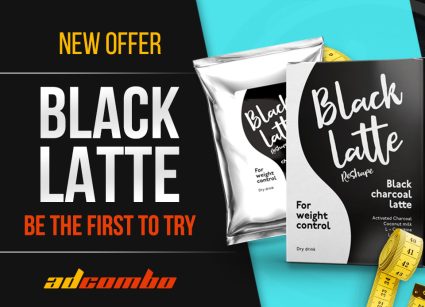-
 Analyze ads as a real spy07.8.2019Reading Time: 5 minutes
Analyze ads as a real spy07.8.2019Reading Time: 5 minutesMost of the existing spy-services specializing in social networks share “locators” principle. A network created out of thousands of profiles for different targeting groups (by age, gender, GEO, interests) forms a radar. The script transfers all the ads from every user’s feed to the database with the targeting markers.
The more accounts (that match the desired targeting and behavior) there are, the better spy-base operates. Any of our accounts should be potentially interesting for Facebook Ads delivery algorithm.
How to become a “good” user for FB Ads:
That’s a piece of cake! You just need to react to ads and give an advertiser exactly what he wants. The more such actions the user makes, the more new ads FB will show you.
But the trouble is that the interests that FB assigns to us rarely correspond to the user who orders something on the Internet. Thus, Facebook needs a little help.
Since in this article we consider eCommerce, you can run an ad on several online shops from Ecombo Junior with purchase optimization and then imitate several purchases in your shops so that the pixel could fire. That would be enough for FB to start actively showing you all the dropshippers’ ads.
You can do it manually, without buying anything. The desired pixel has to fire at least several times on behalf of your profile. Follow these steps:
- Log in your Facebook profile;
- In your online store website start placing an order;
- your pixel ID and the price of the goods on the landing page (the pixel won’t work without it) should be inserted in the following code WITHOUT SQUARE BRACKETS:
fbq(‘track’, ‘Purchase’, { content_type: ‘product_group’, content_ids: ‘[PIXEL_ID]’ , value: [GOODS_PRICE], num_items: 1, currency: ‘USD’, })
- Press Ctrl+Shift+J (open the console in developer mode) for Chrome browser. In the console paste the code and press Enter.
FB will consider it to be a purchase. Ideally, such a procedure is to be done several times in different stores (the more, the better). You can find out the pixel’s ID through the Pixel Helper plugin.
After a while, Facebook will begin to offer you online stores’ ads of various dropshippers almost every 4 posts in the feed in your GEO. Today most of the newbies run up to 20 countries in the ad, so there’s no need to create an account for each particular GEO.
How to track advertisements:
In July 2019, Facebook updated the procedure for disclosure of information about advertising and advertisers. Now you can see not only the interests you’re being targeted on but also some of the targeting settings for each ad. An ad itself can tell us a lot about the methods of promotion. Let’s see:
Look at the number of likes, comments and reposts that an online store has. This shows how long the publication has been existing, whether it has been promoted by the engagement ad in advance or there are negative comments there.
If you click “…” at the top of the ad and choose “Why am I seeing this ad?” option, you can learn a little more about targeting:
From this data, you can find out:
- if the dropshipper is targeting interests or using lookalike;
- or this interest is assigned by the user personally;
- or Facebook has added it to you on its own, as well as age and gender of the targeted audience.
By the way, here is the link to the video of our review.
Next, go to the dropshipper’s fanpage.
Here we suggest paying attention to several things:
- Age. The older the fanpage is, the stronger the shop is.
- Subscribers. The number of subscribers indicates whether the shop was promoted for engagement or not.
- Look through all the Posts in the FP (though dropshippers are not usually engaged in the FB account farming).
- Old habits die hard, so we recommend to look into reviews. Most often there they write something like “SCAM SHOP”, however, a large number of reviews also indicates the viability of the store.
Then open the “Page transparency” section.
Here you can see that the page is managed by some resident of China or India, who sits under different VPNs.
Go to Ad Library and see ads.
Usually, Ad Library properly shows the whole pool of ads, the number of duplicates, the launch date and the list of countries which ad is targeted on.
Make simple judgments: the more duplicates and reruns you make, the more interesting the product becomes. A simple law works here: no one is eager to run traffic on an idle product. In this particular case, we see two ads for a bunch of countries that have been running for less than a week. It’s probably just a simple GEO test.
Therefore, we are not interested in this product. Still, we suggest that you should go to the original ad’s lander and see the cost, plugins and the platform: https://cologoshop.com/products/iron-4
Most websites are made on Shopify or Woocommerce platforms. Pay attention to the cost, delivery options and available payment tools. In the Refund Policy section, you can see that this is a typical dropshipping store, which even asks to return its goods to China. You can easily calculate all the mathematics of the store if you check this product on AliShark and take into account all the Shopify’s commissions.
In any case, this particular product in the current setup causes no desire to test it. Pay attention to the shops, which have a lot of duplicates running more than two weeks or which have several million views on the video.
That’s the way it is.
By the way, we hope our local handymen will use open FB data from the library and, finally, implement a full service with such tools as AliShark, so that the webmaster could receive a full set of data about the shop before launching an ad.
Make sure you leave your comment below if you want us to analyze in detail two different types of conversion – PPL Cash-on-Delivery and PPS.
Thanks!




I waiting for good article about using adplexity and optimization of widgets 🙂 but thanks for this article!
https://blog.adcombo.com/learn-more-about-adplexity
Not an instruction but quite useful article
I try this, but it’s not working. Please check… Thanks!
fbq(‘track’, ‘Purchase’, { content_type: ‘product_group’, content_ids: ‘[PIXEL_ID]’ , value: [GOODS_PRICE], num_items: 1, currency: ‘USD’, })